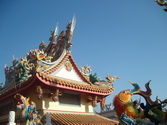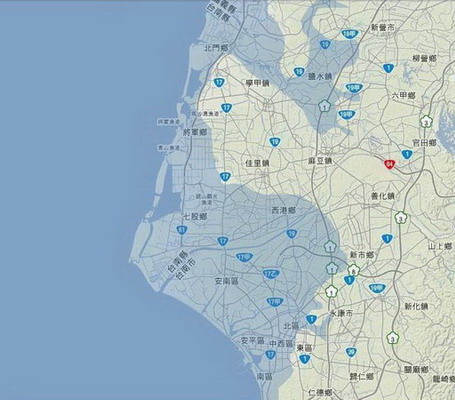
Jiao is a religious ritual held for different kinds of purposes --- it could be inauguration of new temple, or dedication to particular deity, or salvation of wandering souls, or invocation to divinity in order to be exempt from natural calamities. Xigang Jiao, precisely speaking, is a ritual dedicated to Wang Yeh ( literally translated as Royal Devine Emissaries). As to Festival Parade, is an event that host temple, e.g. Qing An temple, sets Wang Yeh in palanquin and carry it to patrol different towns and villages. Other temples which associated with Qing An temple, would join parade with their own troupes and palanquins. During the course of parade, hundreds of palanquins proceeded one after the other, with troupes in between performing public entertainment. So gradually it became a traditional event which took place every 3 years in Xigang. The feature of Xigang festival is that --- not only it is one of the oldest Jiao in Taiwan, but also it's the only one which integrates Jiao and Parade in same event.
Back in 17th century, Xigang was just a small haven nearby Taijiang Lagoon. Because immigrants from Mainland China was getting more and more, so later on Xigang had become a marketplace between Chinese immigrants and aboriginal PingPu tribe. At beginning most of residents lived in village Bafen, so Bafen was regarded as the largest village of Xigang at that time. The first temple in Bafen, in the name of GuMa temple, was dedicated to four feminine divinities. The emperor of Qing Dynasty ever bestowed a stele to GuMa temple to honor that four divinities. Therefore it became one of the most visited temple during that era. In year 1784, the residents in Bafen found a ship stranded on shore of Zeng Wun river. It's said to be a votive ship drifting down from Sucuo. It was built by residents in Sucuo and dedicated to Wang Yeh during the ritual. The residents in Xigang regarded it as good sign. So they dragged that ship out of river and brought it to GaMa temple. Then shortly after they held Xigang Festival for the first time. The festival was dedicated to Wang Yeh, which comprising 12 divinities acting as emissaries of Emperor Yu Huang (the Supreme Lord of celestial, mortal and the nether world). This festival was held every 3 years, respectively in year of OxĦB DragonĦBGoat and Dog. GuMa temple hosted Xigang festival from 1784 to 1820. At beginning only 13 temples joined the parade. But it kept growing in following years. Until year of 1820, the Parade had expanded to 36 villages nearby Bafen.
In year 1823, a catastrophic flood triggered by Zeng Wun river overwhelming Taijiang area, Bafen was swept by that flood and GuMa temple was wrecked as well. Owing to this reason residents in Xigang asked Qing An temple to take place of GuMa to hold festival of year 1823. Since then Qing An temple has become the host of Xigang Festival 'till today. Throughout the past 189 years, the scope of parade has expanded from 36 villages to 96 villages, covering XigangĦBJialiĦBCiguĦBAnding and Annan district.
